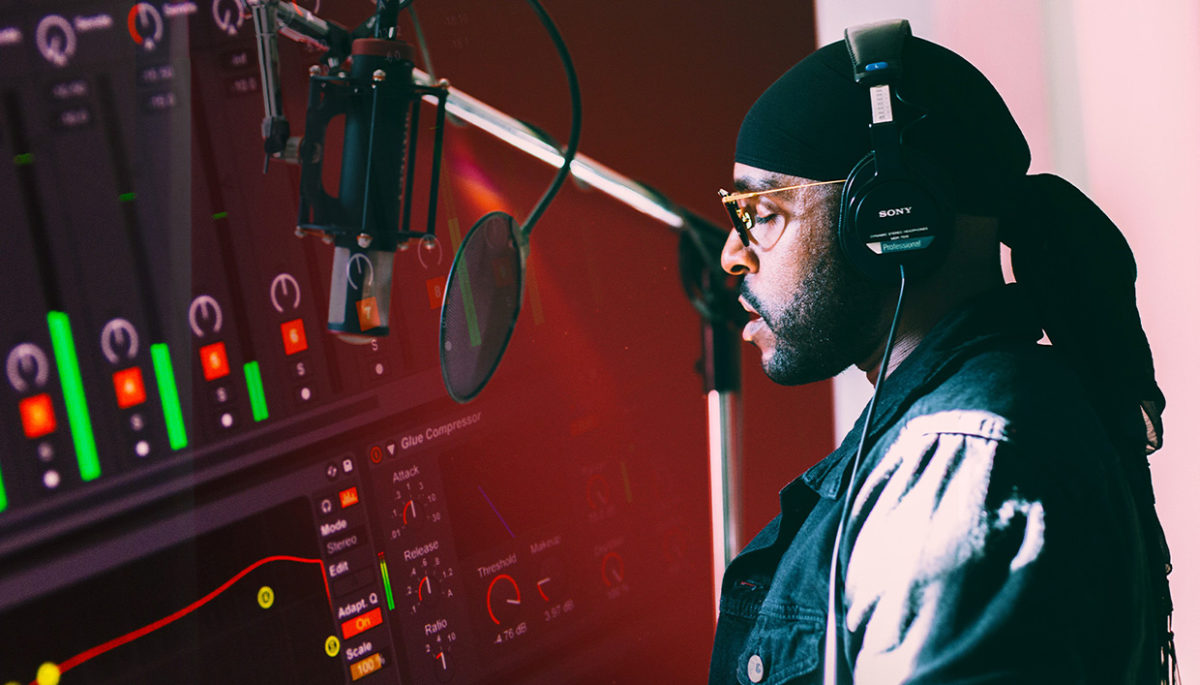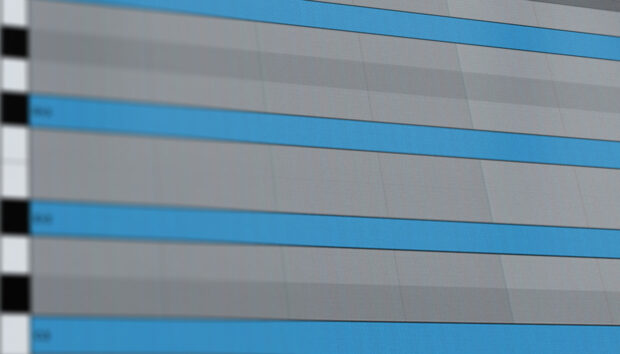
If you’re working with great lyrics, then vocal production is central to your song. Some of the best singers in the world were geniuses with their vocal production, from Freddie Mercury to Mick Jagger and so many other legends of pop and rock. The techniques we will cover here will help take your song into that territory, from average to unforgettable, as we’ll cover vocal leads, doubling vocals, harmonies, mixing, processing and more. And of course, we’ve included links to some of our best gear to help you along the way.
Leading the way
Without a great lead vocal track, so many pop and rock songs wouldn’t be the same. The Rolling Stones, Madonna, and The Smiths all had world class-lead vocals that stuck with listeners for decades. And despite what TV shows like The Voice would have you believe, technique isn’t everything. Many of pop’s greatest singers had voices that weren’t technically perfect but conveyed such sincere emotion, it was impossible not to connect with them. Remember, you can usually fix technique with effects, but emotion is almost impossible to replicate. But ideally, you or your singer will have the perfect balance of both emotion and technical skill.
When producing a vocalist for the first time, have them sing the song from beginning to end at least once, if not two or three times. Once you and the singer feel like you understand what the lyrics and melody are trying to convey, your creative choices will be better informed as you record, and you’ll be able to quickly reference each section’s energy as you hop back and forth between sections while recording. Then, starting with the verses first and then the choruses, have the singer go section by section, working on the lower energy sections of the song first before working up to the higher energy choruses and bridge.
To make sure the energy of the vocal track doesn’t peak or drop inappropriately throughout the song, remember to reference the first few takes you recorded when the singer sang the song all the way through. While it makes sense to record the second verse right after the first, your reference track might reveal that the energy of the second verse was way too low, which is obviously inappropriate after the first chorus. If that happens and you need to record the second verse again, try to keep it to under ten takes. If it’s not working after you’ve run through takes, it might be wise to try again another day. Remember to trust your instincts, as the process is very personal.
Hearing doubles
One of the most effective methods for giving your lead vocal extra depth, energy, and dimension is to double it. Doubling can also work with background vocals. There are a few points to remember when working with doubles though.
Double your chorus first, since typically, the chorus is the highest energy section of the song, creating maximum impact when doubled. Try doubling your pre-chorus too. Though accenting certain lines within the pre-chorus might be enough, so don’t be afraid to experiment. It’s also effective to double short lyrics like “me” or “I”, but whatever you chose to double, put yourself in the listener’s shoes first, think about what emotions you’re trying to convey, then double up.
Some producers use the two-double technique, doing two doubles for any lines that they are doubling. This way, you can pan hard left and right, creating a bigger sound. It can be time-consuming and tricky for singers to match the pitch or phrasing of the lead vocal, so don’t be afraid to use a doubler or chorus plug-in to get the multiple-voice effect on a part. The MOD PACK, for instance, has a great chorus effect and will help you achieve a super tight, consistent sound with very little pitch or timing variance. Certain genres might benefit from the sound of looser doubles, like indie or hip hop, while cleaner styles like pop and country will benefit from a glossier sound. Though if you really want your doubles to sound different, use a different mic or have the singer stand a little bit back from the mic. Remember, always trust your ears.
In harmony
When working with harmonies it’s always smart to start with the chorus before dealing with the verses and the bridge. In a major key, see how a major third above and a fifth below the main melody sounds. You can then try octaves above and below, as well as a fifth above—but remember, the only limit is your imagination, and experimentation is where the magic happens. So if it sounds good, do it. If you’re getting stuck, however, THE MOUTH can be used to generate melodies and harmonies out of any audio you feed it, so go wild. Once your chorus harmony is on point, try picking up key phrases or words in your verses that may be worth emphasizing by listening back through your track. But again, don’t get too caught up in the rules. Use songs you love as your reference and let your intuitions guide you. And if you’re in a band with other great singers, don’t be afraid to get them involved as it could become integral to your sound. If you’re a solo artist, however, it’s best to sing the harmonies yourself so you don’t lose the character of your distinct voice in your songs.
Texturize
Instead of spending hours cycling through pads in your DAW to find one that suits, you can create pads and textures using the vocals of your singer. Have them sing “oohs” and “ahhs” or other short sounds that won’t overshadow the lead vocal, then process those sounds with effects and you’ll have your own synth-like pad to play with. Feel free to apply heavy reverb, chorus, phase, delay, distortion or any other effect you fancy—unique sounds are what you want. You can also find a combination of notes in the key of the song that doesn’t necessarily follow the chord progression, then layer them on top of one another, and then copy and paste for a desired length while adding a sidechain compression. You can also make a unique intro to your track by creating your vocal pads and textures over the chorus section of your song, then copying and pasting those parts where needed. Grouping your tracks together will make editing and moving them around the arrangement easier.
Get chopping
With the explosion of vocal chops and rhythmic hooks in nearly all genres over the past few years, let’s explore two methods for creating a hooky, memorable vocal chop.
First, you can manually edit and chop an audio region by cutting your existing lead vocal track into pieces that you can then loop, or drag and drop. The key to your chopping sound is cutting off your audio region near the middle of a word or note, then repeating the phrase or looping it.
You can also use KONTAKT 6 to help. Simply chop words, phrases, and notes from the lead vocal, export to a folder, and then drop into KONTAKT and use as a sampler. From there you can create new melodies and parts by playing the samples on a MIDI keyboard, which can help you discover new rhythmic hooks.
Mix and process
Last but not least, let’s explore mixing and processing. And for this example, the tips will guide you through the process for a mainstream, pop-oriented track. First, pan your lead vocal down the middle, then, like we talked about with doubling, pan your doubles hard left and hard right. The same goes for doubles of your harmonies, if you have them. Then you can play with pads, textures and chops once you’ve found the proper balance with your vocal tracks. Balance is key everywhere though, so it’s good to keep in mind that panning something 30% to the left means you’ll likely pan something else 30% to the right.
You could also experiment with the balance of the high and low vocal parts. However, since panning high and low vocal parts to opposite sides might make your sound out of balance, you can counteract this by doubling them so that you can pan one double to each side, or keeping them close to stereo.
With your levels and balance set, start setting up your four stereo busses for the vocal effects like slap delay (super short delay), long delay, room reverb, and plate reverb. Chamber reverb also might work, but don’t limit yourself creatively and feel free to mix and match to taste.
Again, with all these tips, the only limit is your imagination — though good gear also helps — so don’t be afraid to experiment and see where it takes you.















